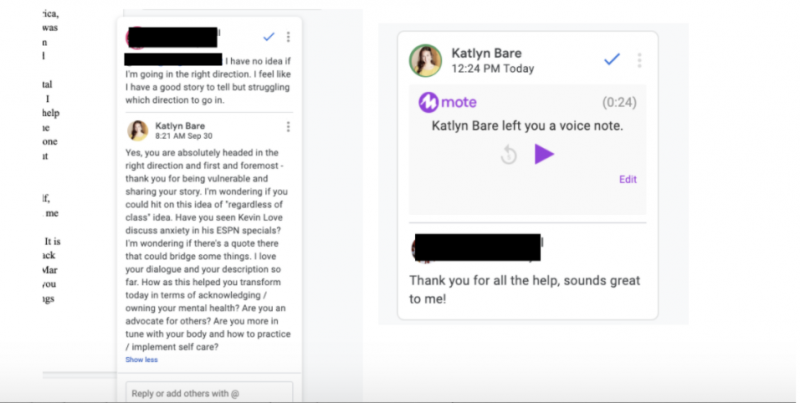Time constraints might not allow every student to participate during a class discussion. By requiring each student to write a response, teachers can receive more understandings of student comprehension levels and personal thoughts.
Huang personally found it easier to talk with his teachers over Zoom, helping him form closer relationships with his instructors than he had pre-pandemic. While Huang appreciated the anonymity of Nearpod responses, he also valued the ability to read his classmates’ attributed posts on Canvas discussion boards. Many of his classmates made jokes about the overly formal way students respond to each other, using language they might not say in a classroom setting, like “concur” and “to that point.” These discussion boards gave him greater insight into his classmates’ points of view, even though he often agreed with them. He read all of his peers' insights in greater detail than what he would typically get from an oral classroom discussion, where dialogue is linear and people have to wait their turns to speak.
“Being able to read what they're thinking in English (class) to this level isn't something that I would have been able to do in in-person learning,” he said.
BETTER AUDIO TECH
Teachers found voice technology as a way to amplify personal connections. Katlyn Bare, an 11th and 12th grade teacher in Cincinnati, began leaving voice — rather than written — comments on her students’ essays during virtual education. Using the Chrome extension mote, she recorded 30 to 90 seconds of feedback for each student.
Hearing her voice, she theorized, provided students with a more natural connection than words on a screen could. When leaving a voice memo, she was more likely to begin with positive feedback than she was in her written comments. Voice memos made approaching feedback less daunting for students: listening to a single audio file might seem more manageable than reading rows of comments. This process was easier for Bare, too — in decreased time, she could provide more feedback to a greater number of students.

NO TECH FOR LESS STRESS
Some teachers found themselves encouraging their students to return to pen and paper during virtual education to prevent a feeling of inundation by technology. In her classes, Heather Bradley began encouraging her students to write their notes on paper toward the end of their first semester of virtual learning. She is a teacher at Thomas Edison High School of Technology in Maryland, where she teaches adult English for Speakers of Other Languages.
The act of writing down new words from the reading, rather than copy-pasting from a device, allowed her students to more thoughtfully consider each term. Her students’ applied reading skills improved as a result. The process also eliminated the need to toggle between screens when taking notes. While especially helpful for her students with less digital experience, writing notes by hand also seemed to lessen her students’ overall technology fatigue. She pointed to the emotional toll posed by distance learning’s webcam surveillance.
“Being able to look away from your screen, at something else, to do your work gives students a renewed sense of intimacy," she said. "I feel like their stress factor lowers, and when you lower that stress factor, they are more readily able to access the content of the lesson.”
Avoiding technological overload during distance learning was a personal choice some high school students made without explicit instruction.
“I personally really don't like having to stare at my computer more than I have to,” said Melina Kritikopoulos, a high school senior in Santa Clara County, California.
Some of her classmates took notes directly on textbook PDFs or online documents. But Kritikopoulos preferred writing on paper. Drawing special characters and formatting was easier by hand than creating her preferred layouts and symbols online. She also remembered content better when she wrote it down rather than typing it.
Though Kritikopoulos was required to turn in typed notes for one of her classes, she still wrote first drafts of her notes by hand — choosing this despite the extra time it took her to type those up. Possessing a set of personal notes provided her with freedom to include jokes or asides, which she said fought boredom and helped with her retention of the course material.

Rae Wymer, a high school student in San Francisco, California, also cited memory as a factor in her choice to write by hand. During virtual learning, she found paper note-taking comfortably reminiscent of in-person education.
“It's just more familiar, you know? Like out of all the changes that we've gone through over the year, of changing to distance learning and kind of getting accustomed to doing everything through a computer screen, it's nice to still have the same style of notes or style of note-taking that I would have if I was doing it in person,” said Wymer.




